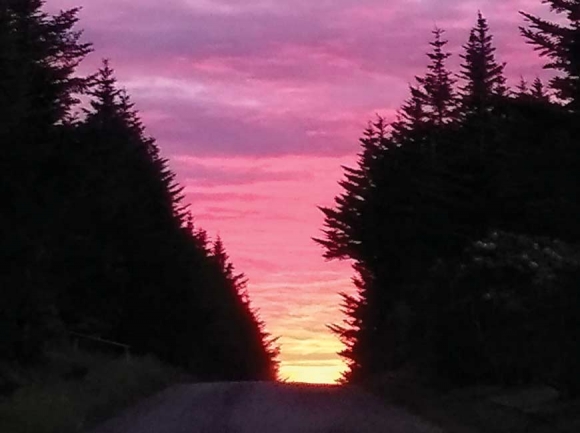But even with the stress of deadline and the loss of a beloved sibling, the beauty and wonder of nature will not be denied. Whether it be Gray’s lily below the Overmountain Shelter on the Appalachian Trail, or a golden-winged warbler along the Overmountain Trail; or a small-flowered purple-fringed orchid on the Blue Ridge Parkway near Mt. Mitchell; or Swainson’s warblers singing and flitting about from the wet tangles of the Grandfather District; or the melodious winter wren; or the mix of hermit thrush and veery and least and alder flycatchers along Ivestor Gap and Art Loeb trails; or the yellow-rumped warbler at the Rhododendron Garden atop Roan Mountain; or the orange, pink and golden brilliance of sunrise in the Blue Ridge, nature will fill you up.
Now don’t get me wrong — anyone who works or hikes or spends lots of time in the forest can tell you it’s not always a bed of roses. This was a particularly tough winter re downed trees and road washouts behind the gates. My vehicle smells of gas and bar lube oil for six weeks as my chainsaw, as well as a pair of heavy duty loppers and a couple of tow ropes stay in my vehicle — they were all well used this spring. There is surely a place for discussion regarding the need for roads in our national forests — how many, what kind, how long, etc. — but, at this point in time, from my strictly utilitarian perspective, I would be dead in the water without roads to get to, or at least close enough to my points that I could get in and out quickly. But even if you have to spill a little sweat and/or deal with the frustration of a washed out road nature provides the best backdrop.
And nature provides a huge paradox. It has such a visceral, emotional connection with our species. Once it nurtured us — we took our food from it; we took our shelter from it, our sustenance. And we learned if we nurtured nature it would provide always. Then we turned to technology and industrialization and nature became a resource to plunder, and it was so bountiful we became addicted. And now there is a battle raging within us and among us about what our “proper” relationship with the natural world should be.
The sad thing is, as we muddle through this battle, we of the Anthropocene are impacting nature in such a way and with such speed that her beauty and wonder may be lost for generations to come.
Don Hendershot is a naturalist and a writer who lives in Haywood County. He can be reached at This email address is being protected from spambots. You need JavaScript enabled to view it.
